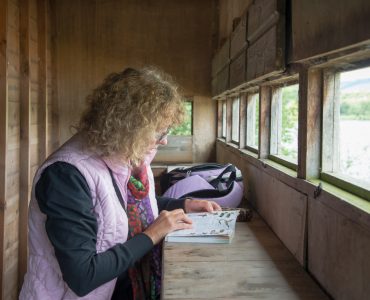The grey partridge is known as Perdix, which is its scientific name. The bird is also known commonly as Hun or English partridge. Some people refer to as the Hungarian partridge. The bird belongs to the pheasant family who are gallinaceous birds. The birds are famous for breeding across the belt of Europe up to Western Asia. Though lately, they have also been introduced in large numbers across North America and now commonly found across the southern Canada region, including north United States. These birds, tend of prefer cereal fields, and across their margins, would choose places for their nests to be built. The birds then can lay up to 20 eggs at a time in the nest. These are non-migratory birds, hence do not move with climate changes and flock in huge numbers outside its breeding season. Also these have a substantial population present and have been put as a least concerned species on the list of threatened bird’s species by IUCN Red List.
The bird is quite sensitive to its habitat areas, and that’s the reason for the bird diminishing in huge numbers from Great Britain areas. Huge land masses were disturbed by the humans by extensive cultivations, causing loss of food and secure habitats for these birds, in turn making these birds flee away from the region. The statistics report says that more than 85% of the total population has been affected over the past 25 years.
It is a rotund bird and has a small build. The bird can be between 28 to 32 cms in length and has brown-blackish coloured flanks and chest. The males would normally have a horse shoe mark on the chest, which is sometime seen among females too. The belly of this bird often, white in colour and horse shoe mark on the chest, would be a chestnut brown colour. Males & females do not have many characteristics based on which they can be differentiated, but the transverse bars on the coverts of the females are the only symbol. The symbol appears after a good long 16 weeks of age of this bird which also symbolizes its entering the adult plumage. On the other side, the juveniles would have a yellow brown body and under part markings would not be as apparent as in the grown ups. The sound which it makes is quite harsh in nature and easily noticeable.
The bird flies for short hauls and has rounded wings. The sound is a funny ‘rick rick rick’ as the bird takes off for flight. These birds normally eat seeds and some insects, which are fed to the younger ones for complementing the protein requirements. This also helps the new born to survive, since initially they can not break seeds and chew them. Also with their growing numbers across the globe, the species has been introduced in lot of parts across United States, and is allowed to be shot at. The bird there is often known by Hungarian partridge or “Hun”.
Grey Partridge
Let us know if you liked the post. That’s the only way we can improve.








